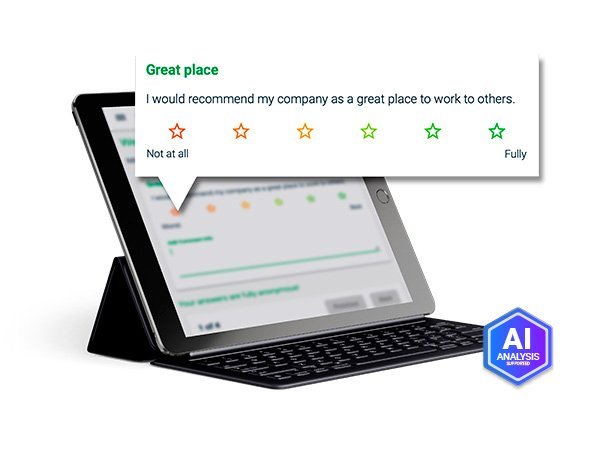Understanding the Power of Employee Pulse Surveys: Fostering Workplace Engagement
Introduction
In the dynamic landscape of modern workplaces, understanding the sentiments and perspectives of employees is crucial for fostering a positive work environment. Employee pulse surveys have emerged as a powerful tool to gauge the collective mood of a workforce. In this article, we will explore the significance of employee pulse surveys, their benefits, and how they contribute to enhancing workplace engagement.
What is an Employee Pulse Survey?
Employee Pulse Survey Questions are brief, focused questionnaires designed to gather real-time feedback from employees on various aspects of their work environment. Unlike traditional annual surveys, pulse surveys are conducted more frequently, providing organizations with timely insights into employee satisfaction, concerns, and overall engagement levels.
The Benefits of Employee Pulse Surveys
Real-Time Feedback
One of the primary advantages of pulse surveys is their ability to capture real-time feedback. This immediacy allows organizations to address emerging issues promptly and make agile decisions to enhance the employee experience.
Improved Employee Engagement
Regular pulse surveys contribute to improved employee engagement by demonstrating that the organization values and considers the opinions of its workforce. Engaged employees are more likely to be productive, creative, and committed to the company’s success.
Identification of Areas for Improvement
By regularly surveying employees, organizations can pinpoint specific areas that may require attention. Whether it’s addressing concerns about communication, workload, or team dynamics, pulse surveys provide actionable insights for continuous improvement.
Increased Employee Satisfaction
Understanding and responding to employee feedback fosters a positive workplace culture, leading to increased job satisfaction. Satisfied employees are more likely to stay with the organization, reducing turnover rates.
Conducting Effective Employee Pulse Surveys
Define Clear Objectives
Before launching a pulse survey, organizations should define clear objectives. Whether it’s assessing overall job satisfaction, identifying potential challenges, or gathering ideas for improvement, having specific goals ensures the survey is focused and impactful.
Keep it Short and Direct
The effectiveness of pulse surveys lies in their brevity. Employees are more likely to participate if the survey is short, direct, and can be completed in a few minutes. This ensures higher response rates and more accurate insights.
Ensure Anonymity
To encourage open and honest feedback, pulse surveys should be conducted anonymously. This allows employees to express their opinions without fear of repercussions, leading to more authentic responses.
Act on Feedback
Perhaps the most critical aspect of employee pulse surveys is the organization’s commitment to acting on the feedback received. Employees are more likely to engage with the survey process if they see tangible changes resulting from their input.
The Impact of Employee Pulse Surveys on Workplace Culture
Building Trust
Regularly seeking employee input through pulse surveys builds trust between the workforce and the organization. When employees see that their opinions matter, trust in leadership and overall job satisfaction increase.
Enhancing Communication
Pulse surveys are a powerful tool for improving communication within the organization. They provide a platform for employees to voice concerns, suggest ideas, and feel heard, fostering a culture of open communication.
Driving Continuous Improvement
The insights gained from pulse surveys enable organizations to implement continuous improvement initiatives. Whether it’s refining processes, addressing specific concerns, or recognizing achievements, a commitment to ongoing improvement contributes to a positive workplace culture.
Conclusion
Employee pulse surveys play a pivotal role in shaping a positive and engaging workplace culture. By regularly seeking and acting on employee feedback, organizations can foster an environment of trust, communication, and continuous improvement. In the ever-evolving landscape of work, understanding the pulse of your employees is key to building a resilient and thriving workforce.
FAQs
- How often should employee pulse surveys be conducted?
- The frequency of pulse surveys can vary, but quarterly or monthly surveys are common to capture real-time feedback.
- Are pulse surveys suitable for all types of organizations?
- Yes, pulse surveys can be adapted for organizations of all sizes and industries, promoting a culture of continuous improvement.
- Can employees trust that their responses will remain confidential?
- Yes, reputable organizations ensure the anonymity of pulse survey responses to encourage honest and open feedback.
- What types of questions are included in employee pulse surveys?
- Pulse surveys typically include a mix of quantitative and qualitative questions, covering aspects like job satisfaction, work-life balance, and team dynamics.
- How can organizations effectively communicate survey results to employees?
- Organizations can share survey results through transparent communication channels, addressing key findings and outlining any actions planned in response to the feedback.







